Dalin has to accept second again as Beyou rounds out the Route du Rhum podium
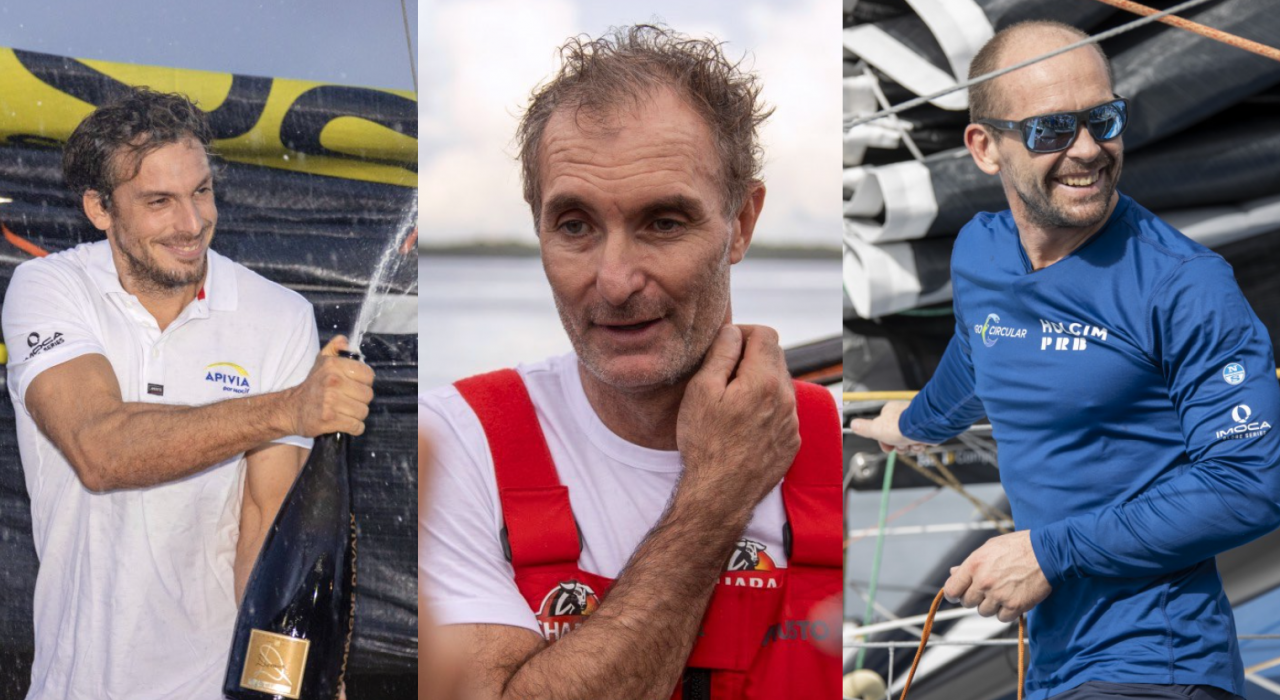
You have to feel for Charlie Dalin. The skipper from Le Havre desperately wanted to win the Route du Rhum-Destination Guadeloupe in his last race on Apivia 1.
But although he led almost continuously from the start off St Malo, he was overtaken in the closing stages in the trade winds by Thomas Ruyant and ended up finishing two hours behind the LinkedOut skipper as runner-up.
As Dalin was the first to point out on the dockside in Pointe-à-Pitre, he has now accumulated what for him is a frustrating and disappointing pattern of second places in the major solo races and championships.
He was runner-up in the Solitaire du Figaro twice, in 2015 and 2016, he finished in second place on corrected time in the last Vendée Globe and he has now finished runner-up on debut in the Route du Rhum, to follow the same position in last year’s Transat Jacques Vabre.
But Dalin has so much to be proud of, a sailor who has won plenty of other races in the IMOCA Class. And in this race he set Ruyant a really tough challenge, despite sailing with one broken winch and having to cant his keel each time by hand from the halfway stage, after the hydraulic mechanism failed.
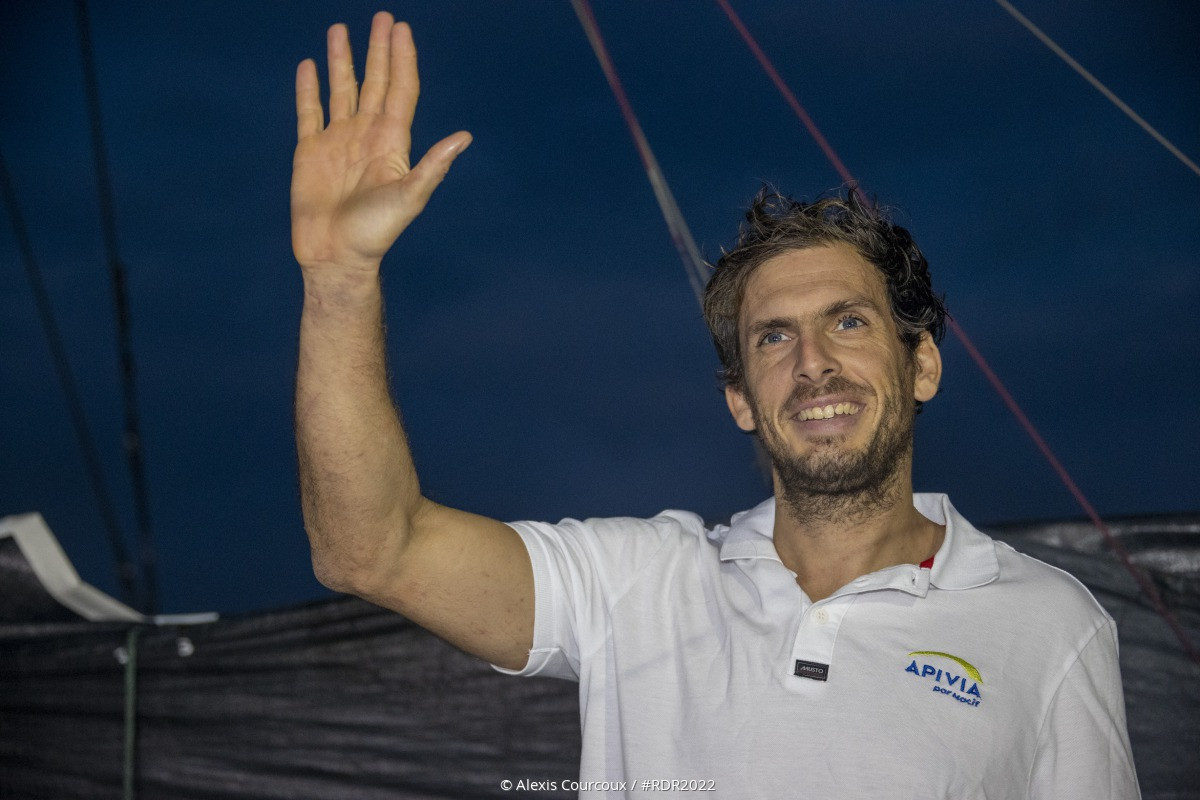
Even up until the very last miles the Apivia skipper had not given up after being trapped by two squalls in the trade winds that allowed Ruyant to get away. “I thought we were going to have a great battle again around Guadeloupe, but no, my last opportunity didn’t happen. Thomas handled it like a boss,” he said.
Like the winner before him, Dalin was exhausted by the rigours of this race that saw all the top-four skippers beat the record time set by François Gabart in 2014. “It was a sprint,”he said. “I didn’t have time to do anything but take care of the boat. I was really extremely tired. We were pushed to the limits the whole way and went deep into fatigue. Eleven days like that is hard to keep up – I didn’t even have time to shave, to take pictures or to take videos.”
Dalin said that during the time when he was leading, in the challenging early days of the race, he never managed to make a break that was decisive and in each transition the wind filled in from behind. Then, exiting the ridge west of the Azores, Ruyant caught up with him and from that position, the LinkedOut skipper was able to pounce once they got into downwind conditions in the trades.
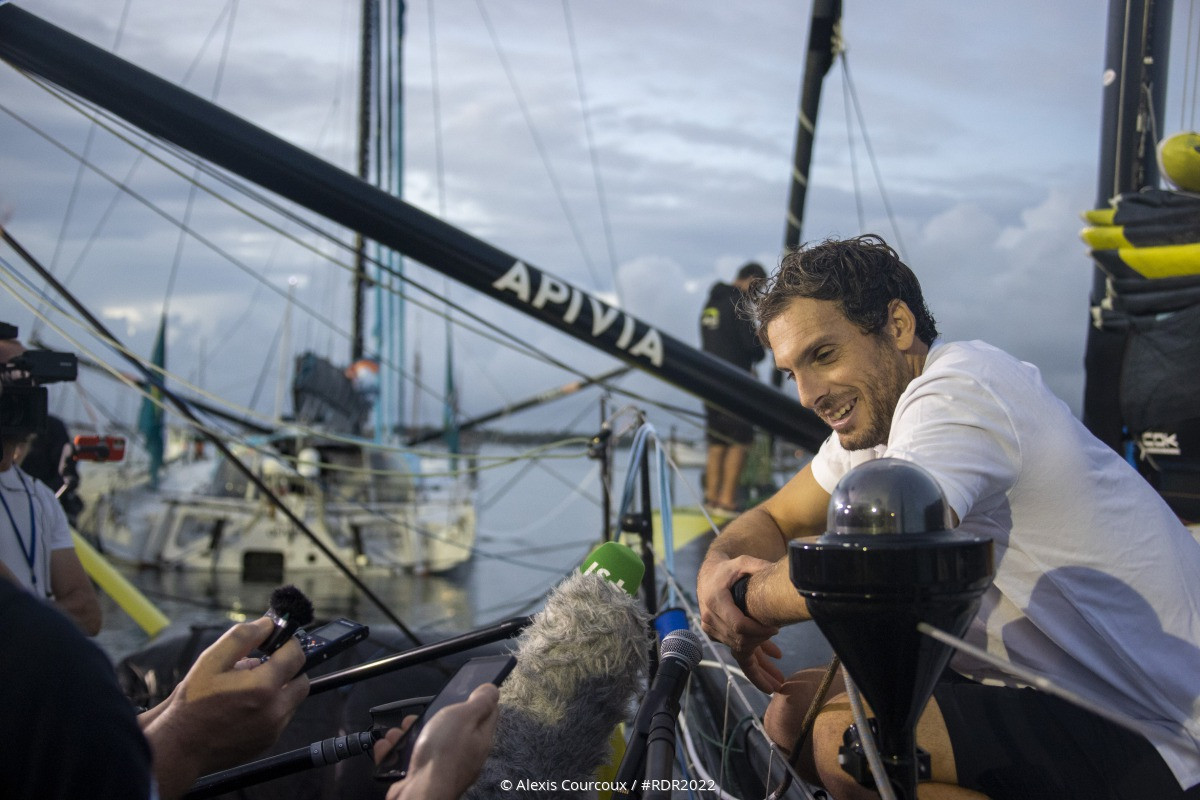
Dalin was philosophical about not winning the race even though he pushed as hard as he could. He said, these days, he sails his IMOCA just like a Figaro boat and he has learnt to live with that sort of pressure both on himself and on his boat. “I also told myself that I still like this sort of sailing, especially when I arrived in the trade winds,” he said. “It was great – I thought it was great to have a job like this that allowed me to sail on a boat like this in shorts and a T-shirt in the trade winds.”
Like Ruyant, Dalin now moves on to a new boat that will be his focus as he builds up to the next Vendée Globe, and he was emphasising the positive side of what he has achieved in Apivia 1. “It’s the end of a great season with a great record of achievements over the four years. If someone had told me that we were going to have so many good results in these races, I would have signed up straight away,”he said.
The next finisher, rounding out the top-three podium places, was Beyou on the brand new Charal 2, who crossed the line nearly three-and-a-half hours after Ruyant. This was a remarkable performance in its own right on a boat that was designed and built after the last Vendée Globe and by a skipper who set sail with the main objective of finishing the race in one piece.
In fact the new Sam Manuard design, with its unique V-shaped rudder configuration, was almost flawless in a tough test upwind and down, over 3,500 nautical miles on the Atlantic racecourse.
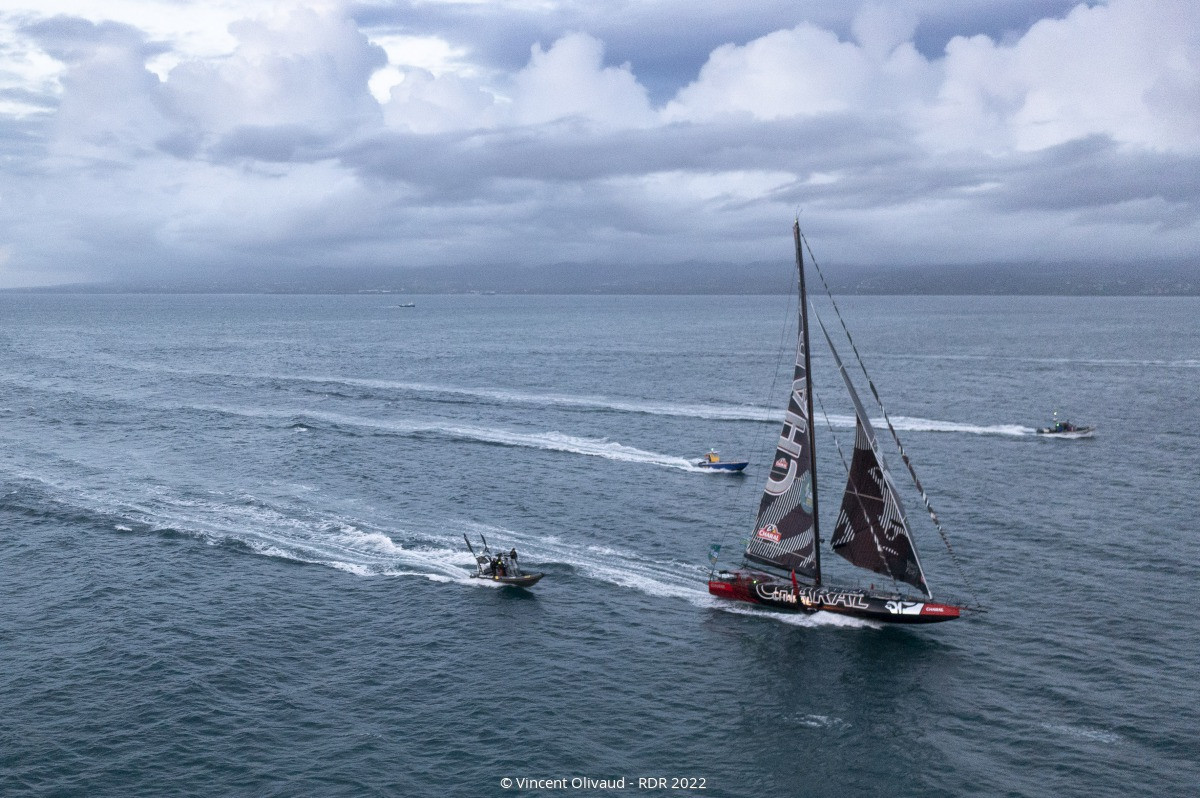
Like his rivals, Beyou was short of sleep and completely worn out by the time he made it to the dockside in Guadeloupe. He compared his battle with Ruyant and Dalin ahead of him – and Kevin Escoffier on Holcim-PRB on his tail – to the intensity of a Figaro leg, a championship Beyou has won three times.
“The three of us have been going at for some time now over shorter distances,”he said of Dalin and Ruyant, “so we knew it was going to end up like that on the Route du Rhum. The level of intensity was at its maximum. I don’t know how you can do more or less,”he added laughing. “It’s really like a Solitaire du Figaro, but on boats that add stress. It’s pure competition – it’s great.”
Beyou did not hide the fact that this super-powerful racing machine, that he and his team have developed, is even harder to live on than his previous boat and even harder to set-up to get the maximum performance from it.
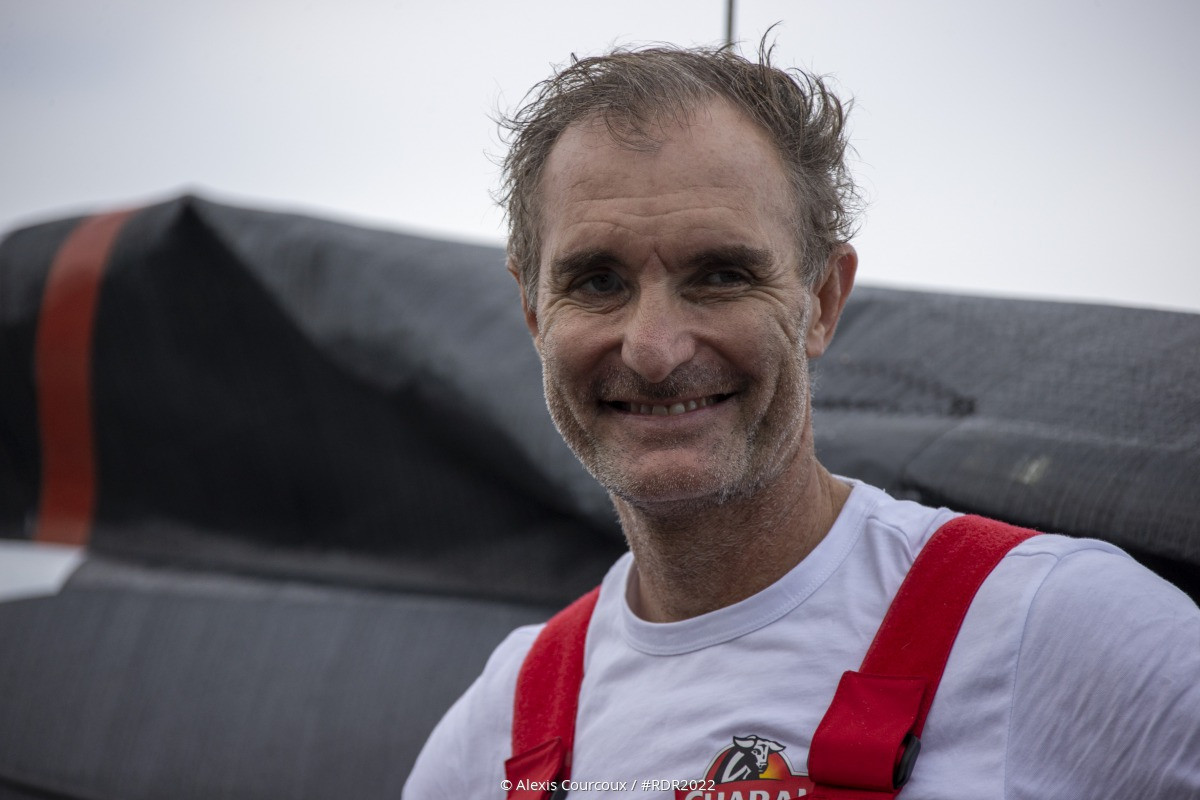
“Of course, when you come off a boat like Charal 1 (now Teamwork skippered by Justine Mettraux), which I knew to the tips of my fingers, everything is a bit more complicated on this one. But with the hull and the foils we tried to increase the power, so it makes the boat more violent, which is not a surprise. Over 10 days it was tough,”he said.
But Beyou has seen enough to be confident that he has a machine under him to achieve his dream of winning the Vendée Globe. “Downwind in the breeze, it works great,” he said. “Now we have to find all the little adjustments in the transitions. And I can’t wait to go to the Southern Ocean with it to see how it behaves in strong downwind conditions.”
In fourth place, nearly six hours behind the winner, was another brand new boat – Escoffier’s well-prepared Holcim-PRB. This also came through its big test pretty well, apart from a broken longitudinal beam in the bow on which Escoffier was able to make running repairs.
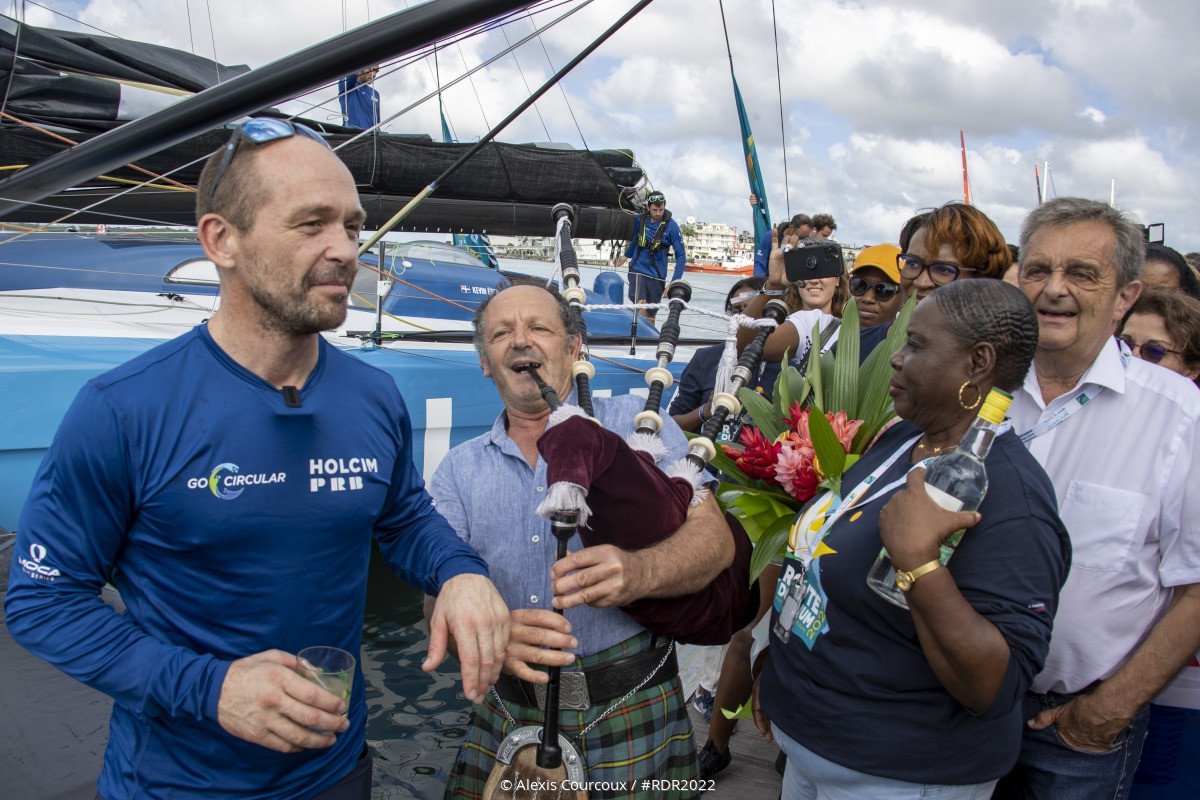
The 42-year-old Volvo Ocean Race winner, who was a key part of the Dongfeng Race Team, was keen to focus on the positives from his first transatlantic race in the Class since having to abandon his IMOCA in the Southern Ocean when it sank in the last Vendée Globe.
“I’m a competitor, so I am a bit disappointed but, with hindsight, this has allowed me to accumulate a lot of knowledge about the boat and to see that it was well-conceived,”said Escoffier. “And then it has been two years since I raced an IMOCA, so it’s good to get back into the swing of things and to see that I wasn’t out of practice. There are many positive points.”
Escoffier was pleased that he had always been in the mix, among the top-five or so, right up to the closing stages. “I’m happy to have arrived having sailed like that, having been in contact with the leaders,”said the skipper from St Malo. “It allows me to return to IMOCA racing in the right way and, even if I am not on the podium, it gives me confidence for the future, in the boat and in myself.”
Ed Gorman
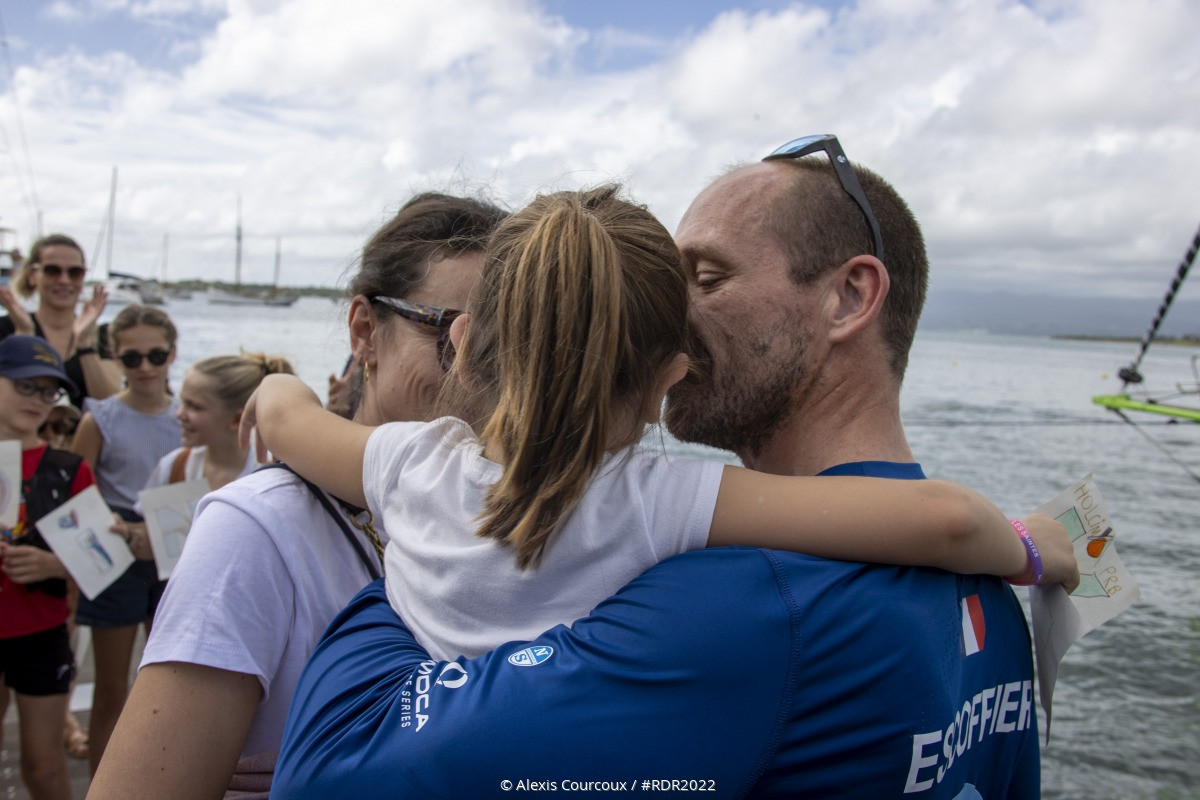
Teams info
ALL ACCESS #2 | CLARISSE CRÉMER
Let's dive into the thrilling preparations for the Vendée Globe. For the IMOCA skippers, the year 2024 holds paramount importance, marking the culmination of their efforts. Sailing around the world solo is their ultimate…
•••The Ocean Race and IOC/UNESCO: contributing towards the science we need for the ocean we want
The Ocean Race and IOC UNESCO collaborate on ‘Sailing into the Future for the Ocean Decade’ event in Barcelona
•••